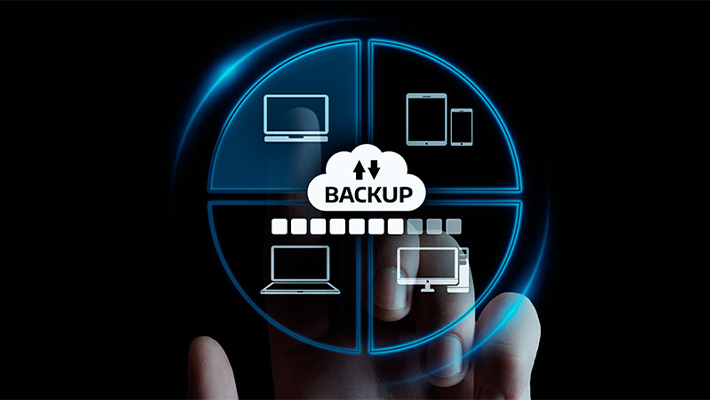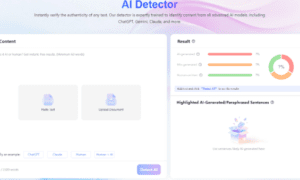In today’s tech-driven world, data is the lifeline of every business. From financial records and customer databases to internal communication and operational tools, companies are swimming in information. But what happens when that data is lost, corrupted, or breached? That’s where Managed IT Services come into play.
Managed IT Services aren’t just for fixing computers or monitoring networks—they’re crucial players in the complex world of data backup and recovery. With cyber threats becoming more sophisticated and businesses relying heavily on digital infrastructure, having a reliable backup and recovery plan isn’t just a nice-to-have—it’s a must.
So, let’s explore the critical role Managed IT Services play in ensuring your business’s data stays safe, recoverable, and always available.
Why Data Backup and Recovery Matter More Than Ever
Before we dive into the how, let’s talk about the why.
Imagine waking up one day to find all your customer data has vanished due to a server crash. Or perhaps your company has fallen victim to ransomware, locking away critical files unless a ransom is paid. Scenarios like these aren’t just hypothetical—they happen every day.
Data loss can result from:
- Hardware failure
- Cyberattacks
- Human error
- Natural disasters
- Software corruption
When such events occur, businesses without a structured backup plan suffer massive operational and financial setbacks. In some cases, they never recover.
This is exactly where Managed IT Services shine—they take the stress out of preparing for the worst.
What Are Managed IT Services?
Managed IT Services refer to outsourcing your company’s IT responsibilities to a third-party provider. These services often include network monitoring, cybersecurity, system updates, cloud management, and yes—data backup and recovery.
Instead of reacting to IT issues, these providers take a proactive approach, preventing problems before they impact your business. They ensure data is backed up regularly, stored securely, and recoverable when needed.
And the best part? Everything is handled by professionals who live and breathe IT. That means less downtime, fewer mistakes, and peace of mind.
The Backup Part: Preventing Data Disasters
Let’s start with backup. Backing up your data means creating copies—preferably stored in multiple secure locations—that can be accessed in case of data loss.
But not all backup methods are created equal.
Managed IT Services go beyond simple duplication. They implement advanced backup strategies that include:
- Automated Daily Backups
- Off-site and Cloud Storage
- Encryption and Security Protocols
- Versioning (multiple copies over time)
- Scheduled Testing to Ensure Reliability
More importantly, they tailor the approach to your business’s specific needs. Whether you’re dealing with large databases, sensitive customer information, or a fast-changing digital environment, the backup strategy will align with your operations.
Now, while backups are essential, they’re only half the equation. Recovery is just as vital.
The Recovery Part: Getting You Back Online Fast
A backup is only useful if you can actually restore your data quickly and accurately.
That’s where a well-structured recovery process steps in. Managed IT Services ensure that when disaster strikes, your data isn’t just somewhere—it’s ready to be re-deployed into your system with minimal disruption.
Recovery plans include:
- Disaster Recovery Testing
- Defined Recovery Time Objectives (RTO)
- Recovery Point Objectives (RPO)
- Failover Systems to Keep You Operational
The idea is simple: restore everything, fast. And that’s a big part of the value proposition.
Strengthening the Backup Plan with Cybersecurity Services
Data protection isn’t only about having a copy—it’s also about keeping that copy safe.
This is where Cybersecurity Services step in. Think of them as the guard dogs of your digital vault. A comprehensive backup and recovery plan must be paired with strong security to fend off modern cyber threats.
Managed IT providers typically integrate cybersecurity with backup plans through:
- Firewalls and Anti-Malware
- Intrusion Detection Systems (IDS)
- Multi-Factor Authentication (MFA)
- Regular Security Patching
- User Access Controls
Cybercriminals are constantly evolving, but with the right cybersecurity defenses in place, your backups stay protected, and your recovery plan stays intact.
And remember: a backup corrupted by malware is as useless as no backup at all. That’s why both systems must work in harmony.
How IT Help Desk Services Support Data Continuity
As businesses grow, so does the complexity of their IT ecosystems. Systems crash, users get locked out, and software updates don’t always go as planned. That’s where IT Help Desk Services come into play.
These services act as your first line of support when technical issues arise. More importantly, they also help users navigate the backup and recovery process effectively.
Let’s say a team member accidentally deletes important files or experiences a system crash—help desk technicians can walk them through recovery, initiate restores, or escalate the issue to senior techs, ensuring quick resolution.
This real-time support reduces downtime and minimizes stress, especially during critical recovery scenarios.
The Benefits of Outsourcing Backup and Recovery
Many small to mid-sized businesses attempt to handle data management in-house. While admirable, this approach often leads to gaps in coverage, outdated protocols, and overlooked vulnerabilities.
Outsourcing to Managed IT Services offers major advantages:
- Expertise: You gain access to a full team of professionals, without the overhead of hiring in-house.
- 24/7 Monitoring: Backups and security are monitored round the clock, not just during business hours.
- Cost Efficiency: One flat monthly rate typically covers everything—no surprise costs.
- Scalability: As your business grows, your backup and recovery strategies scale accordingly.
- Compliance: Providers ensure your backups meet industry regulations for data protection.
In short, it’s not just about technology—it’s about continuity, trust, and reliability.
Cloud Integration and Hybrid Strategies
Modern backup strategies are evolving, and cloud-based solutions are now leading the charge.
Managed IT Services often offer hybrid models that combine on-site and cloud storage. This allows for:
- Faster restores from local backups
- Resilient off-site storage in case of disaster
- Greater flexibility in how and where you access your data
This layered approach means your business can withstand multiple types of disruption—from power outages to full-blown cyberattacks.
Building a Culture of Data Responsibility
It’s important to remember: backup and recovery aren’t just IT’s responsibility—it’s a company-wide priority.
Managed IT Services often include staff training and policy development to foster a culture of data responsibility. These sessions may cover:
- Data handling best practices
- Phishing awareness
- Safe password habits
- Reporting suspicious activity
When employees understand their role in data protection, the whole organization becomes more resilient.
Future-Proofing Your Business
Technology doesn’t stand still. New threats emerge, systems evolve, and storage methods change.
By investing in Managed IT Services, businesses future-proof their data strategies. They ensure adaptability, compliance, and security no matter what the future holds.
And in a world where downtime means lost revenue and reputational damage, that’s a competitive edge you can’t afford to skip.
Final Thoughts
Whether you’re a startup, a growing enterprise, or a mature business, Managed IT Services provide a robust safety net for your data. From creating intelligent backup routines to implementing fast, reliable recovery systems, these services are essential in today’s digital-first environment.
The integration of security, support, and strategy turns data protection into a business advantage—not just a technical necessity.
If you haven’t evaluated your current backup and recovery processes, now’s the time to take a closer look. A well-executed plan could be the difference between a temporary glitch and a full-scale disaster.
Investing in Managed IT Services is no longer optional—it’s foundational.
Read More From Techbullion



































